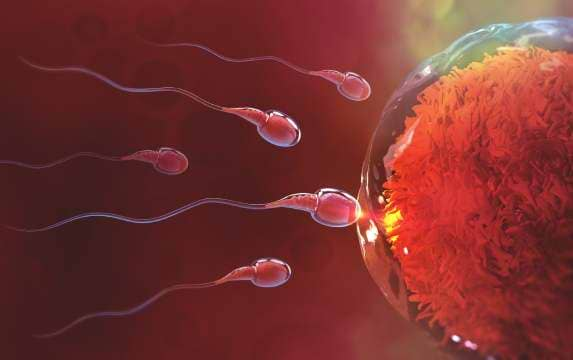Sexual disorders in men are very common, although the interchangeable use of terms such as ‘impotence’ and ‘erectile dysfunction’ to describe two problems which are related, albeit different, could be confusing. What is impotence and how does it affect male sexual health? Read all about it in the following article.
Healthy sexuality is a central aspect in every man’s existence. It affects the quality of life, general and mental health, one’s own self-esteem and confidence, and relationships between partners. Male sexual activity is a complex physiological process, and the maintenance of normal sexual function depends on the coordination of multi-systems, whereby hormones and neural pathways must be in perfect synchronism for sexual desire to arise. Intactness of blood vessels, nerves and penile structure is vital for attaining and maintaining an erection during sexual intercourse. Muscles and nerves act in coordination for ejaculation to take place, which is achieved as sperm passing from the testicles to the urethra. Orgasm is in itself a complex phenomenon, which has remained partly mysterious and not entirely understood. It too involves synchronism and synergy between organs, multi-systems, muscles and various neural pathways.
Throughout life, there may be changes in sexual function as part of the natural age-related changes undergone by the human body. However, there are situations where an exceptional problem might arise, normally subsequent to achieving the phase of sexual maturity. It may be physical or psychological in nature, and it might indeed undermine the quality of life. However, such problems might also be the first sign of an underlying physical or psychological disease – which is why they must not be ignored and should be diagnosed and treated appropriately.
The Difference Between Impotence and Erectile Dysfunction
The term ‘Male Sexual Dysfunction’ refers to problems that undermine the ability to have full sexual intercourse. As mentioned, it is not a single disease or condition, but rather, it refers to an obstacle in any of the phases which comprise the male sexual activity or one of its components, which are:
- sexual desire/libido
- sexual arousal/erection
- orgasm
- sperm ejaculation
In the past, it was customary to use interchangeably the terms ‘impotence’ and ‘sexual dysfunction’ to describe the various problems related to each of the phases of sexual activity (including erectile problems). However, nowadays, the term impotence is hardly used in medical terminology due to its negative connotations.
Hence, as part of the whole complex of sexual dysfunction problems, the term ‘erectile dysfunction’ is specifically defined as a continuous (chronic) problem in attaining an erection hard enough for penetration, as well as the inability to maintain sufficient rigidity during sexual intercourse.
The Various Types of Male Sexual Disorders
Male sexual disorders are divided to categories – according to their phase in the sexual response. They will be described separately, though certain medical conditions might cause more than one sexual dysfunction:
Hypoactive Sexual Desire Disorder
Low libido pertains to a decrease in sexual drive and desire as well as diminishing sexual fantasies and thoughts. Although It’s common to lose interest in sex from time to time, and libido levels may vary throughout life, low libido for a long period of time which leads to avoiding sexual intercourse may undermine relationships and generate considerable frustration. Additionally, low libido can sometimes be an indicator of an underlying health condition, thus it’s important to get professional help. The following are some of the causes for low libido:
- Low testosterone levels – testosterone is the male sex hormone, produced by the testicles and the adrenal gland. It is essential for maintaining sexual desire, sperm production, stimulating the growth of the penis and testes, increasing bone and muscle mass, maintaining mood and energy levels, and much more. Testosterone levels may fluctuate from time to time – which is normal, as long as they are kept within the normal ranges: 8.4 – 27.5 nanomole/liter. Age-related decline in testosterone levels is very common as part of the normal aging process. Just for comparison, among 7% of the men at the of 40-60 there is a reduction in total testosterone, as opposed to 20% reduction in testosterone among men at the age of 60-80. However, a drastic drop in testosterone level might lead to a continuous decrease in sexual desire. In most cases, testosterone-based hormonal treatment will improve libido, restore erections and increase sexual satisfaction.
The most common causes for low testosterone levels are older age, injury and obesity. Additionally, changes in hormonal balance may be caused by hypothyroidism as well as conditions involving increased prolactin levels, cancer treatment (chemo and radiation therapy), high alcohol or cannabis consumption, the use of certain medications (antihypertensive drugs, hormone therapy for prostate cancer, steroids, opioids, antacids, certain antidepressants and more).
- Chronic diseases – When feeling unwell due to effects of a chronic health condition, normally there would be an understandable decrease in sex drive. One obvious example is chronic pain. Other chronic conditions that might affect libido are diabetes, obesity, liver insufficiency, lung, heart and kidney diseases, inflammatory bowel disease, multiple sclerosis, and more.
- Sleep problems – studies have indicated, that obstructive sleep apnea may cause a reduction in testosterone levels, and in turn, decreased sexual activity and libido even among men who are not obese. In another research in young, healthy men, testosterone levels decreased by 10 – 15% following one week of sleep restriction to 5 hours per night.
- Psychological and emotional causes – it is well known that persons suffering from depression experience a reduced or complete lack of interest in activities they once found pleasurable, including sexual intercourse. However, decreased libido can be a side effect of antidepressant medications, such as Prozac or Cymbalta. Other causes include prolonged stress, low self-esteem, performance anxiety, problems in relationships and more.
Male arousal Disorders – these disorders involve a difficulty or an inability to get aroused during sex. The most common of these disorders is erectile dysfunction, which is prevalent particularly during the older age-range groups. As opposed to problems with libido, a person suffering from an arousal disorder will experience a desire to have sex. The most common risk factors of erectile dysfunction include problems in blood vessels which cause a reduction in the blood supply to the penis due to the narrowing of the arteries (mostly due to age, hypertension, atherosclerosis, smoking and obesity), as well as a problem in the venous system causing blood to drain too fast from the penis. Diabetes, hormonal imbalances (such as decrease in testosterone or increase in prolactin) as well as psychological problems – are all common risk factors of erectile dysfunction. For further reading on erectile dysfunction []
Ejaculation disorders – there are common conditions, such as the inability to control ejaculation prior, during or after penetration (premature/rapid ejaculation), as well as less common conditions such as delayed ejaculation or an inability to ejaculate. Premature/rapid ejaculation is the most common type of ejaculation disorder, and it affects 30% of the men at some stage of their life. It happens when ejaculation occurs prior to, or a minute after penetration, and it normally causes great distress and frustration, unsatisfying sexual relations as well as avoidance of sexual intimacy. The cause for premature ejaculation is not entirely clear. Apparently, the problem involves biological factors, such as an over-sensitivity of the penis coupled with a disruption of serotonin receptors’ activity. Psychological causes, such as anxiety, might likewise be involved.
It is important to distinguish between primary and secondary premature ejaculation: the former is highly prevalent in younger men whose unique physiologically triggers erection, orgasm and ejaculation after only just minimal stimulation. The problem is usually life-long, beginning with initial sexual encounters. It continues without significant changes, though there might be an improvement once more sexual experience is gained or during times of long, permanent relationships. Secondary premature ejaculation on the other hand is typically manifested among older age-groups. It develops due to certain circumstances after having previous sexual experiences without ejaculatory problems. For example, a large proportion of men with erectile dysfunction likewise experience premature ejaculation due to performance anxiety. Other risk factors include obesity, inflammation of the prostate gland, thyroid imbalance, genetic factors, mental stress or traumatic sexual experiences as well as problems in relationships. In recent years however, various creams and medications were developed, which together with psycho-sexual therapy, usually improve symptoms greatly.
Delayed ejaculation and the inability to ejaculate are less common conditions that might cause great distress to both partners. Reasons include inhibited sexual desire for a partner, medical problems such as diabetes (due to neural damage), bladder problems or retrograde ejaculation following prostate gland operation (a situation where an orgasm is experienced), use of certain medications (including antidepressants, anti-hypertension drugs and alpha blockers), exaggerated masturbation as well as high stress levels. Even in these situations, psych-sexual therapy coupled with medications can help tremendously.
Male Orgasmic Disorder – this uncommon condition is characterized by persistent difficulty in attaining orgasm after adequate stimulation. Causes include diseases such as HIV infection, multiple sclerosis and diabetic neuropathy, or otherwise complications of genital surgeries, pelvic trauma, the use of certain medications (such as antidepressants, anti-hypertension drugs) as well as various psychiatric conditions.
[1] American Psychiatric Association (APA). Diagnostic and Statistical Manual of Mental Disorders, 5th Ed. Washington, DC: APA, 2013.
[2] J.B. Teoh, A. Yee, M. Danaee, C.G. Ng, A.H. Sulaiman Erectile dysfunction among patients on methadone maintenance therapy and its association with quality of life J. Addict. Med., 11 (1) (2016), p. 40
[3]Cindy M. Meston & Amelia M. Stanton. Hypoactive Sexual Desire Disorder. TEXAS.
[4]Alonço Viana, MD, MS, Ana Carolina Daflon, MD, Arnaldo Couto, PD, PhD, Denise Neves, MD, PhD, Maria Helena de Araujo-Melo, MD, PhD, Robson Capasso, MD. (2017). Nocturnal Hypoxemia is Associated With Low Testosterone Levels in Overweight Males and Older Men With Normal Weight. Journal of Clinical Sleep Medicine, Vol.13 Issue 12.
[5]Rachel Leproult, PhD and Eve Van Cauter, PhD. (2015). Effect of 1 Week of Sleep Restriction on Testosterone Levels in Young Healthy MenFREE. National Library of Medicine, JAMA. 2011 Jun 1; 305(21): 2173–2174. doi: 10.1001/jama.2011.710
[6]Rösing, D; Klebingat, KJ; Berberich, H J; Bosinski, H A G; Loewit, K; Beier, K M. Male Sexual Dysfunction: Diagnosis and Treatment From a Sexological and Interdisciplinary Perspective (2009). Dtsch Arztebl Int 2009; 106(50): 821-8. DOI: 10.3238/arztebl.2009.0821
[7]Jeffrey S. Simons & Michael P. Carey, (2001). Prevalence of Sexual Dysfunctions: Results from a Decade of Research. Archives of Sexual Behavior volume 30, pages 177–219. doi: 10.1023/a:1002729318254
[8] Gandaglia G, Briganti A, Jackson G et al. A systematic review of the association between erectile dysfunction and cardiovascular disease. Eur Urol. 2014 (65):968-978.
The Company hereby clarifies that the information contained on the website is for informational purposes only, and is not intended to be a substitute for professional medical and healthcare advice, and does not constitute medical advice or opinion. Always seek the advice of your physician or other qualified health provider with any medical condition or question you may have regarding a medical condition.





